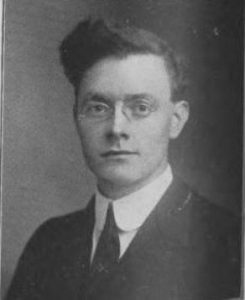
Photo info ...
Credit: sandsoftime via Find A GraveView Source
(Aug. 17, 1888-Dec. 27, 1952). Physician, public health leader, medical historian, educator, and author, Thurman Brooks Rice, a native Hoosier, moved to Indianapolis in 1917 after having taught at Winona College (1914-1916). He received his medical degree from Indiana University in 1921. While working as a medical student in the Indiana State Board of Health (ISBH), he formed a bond with then secretary of the board . In August 1922, Hurty sent Rice to investigate a serious epidemic of typhoid fever at Winona Lake, Indiana, with instructions “to do anything reasonable and necessary to protect the public health.”

From this point on, Rice served the people of Indiana and the ISBH in many capacities, including director of the laboratory of the Indiana State Board of Health (1924-1926), professor of bacteriology and public health at Indiana University (1926-1946), assistant director of the Indiana Division of Public Health (1933-1936), acting state health commissioner during World War II, and editor of the from 1933 until his death. The auditorium of the ISBH Building was named Rice Auditorium in his honor.
A principal source for students of Indiana medical history, Rice was the author of over 20 books, including (1946), which is virtually a history of the public health movement in Indiana during the late 19th and early 20th centuries, and (1949) (See ). His unfinished “One Hundred Years of Medicine: Indianapolis, 1820-1920” appeared in the .

Help improve this entry
Contribute information, offer corrections, suggest images.
You can also recommend new entries related to this topic.